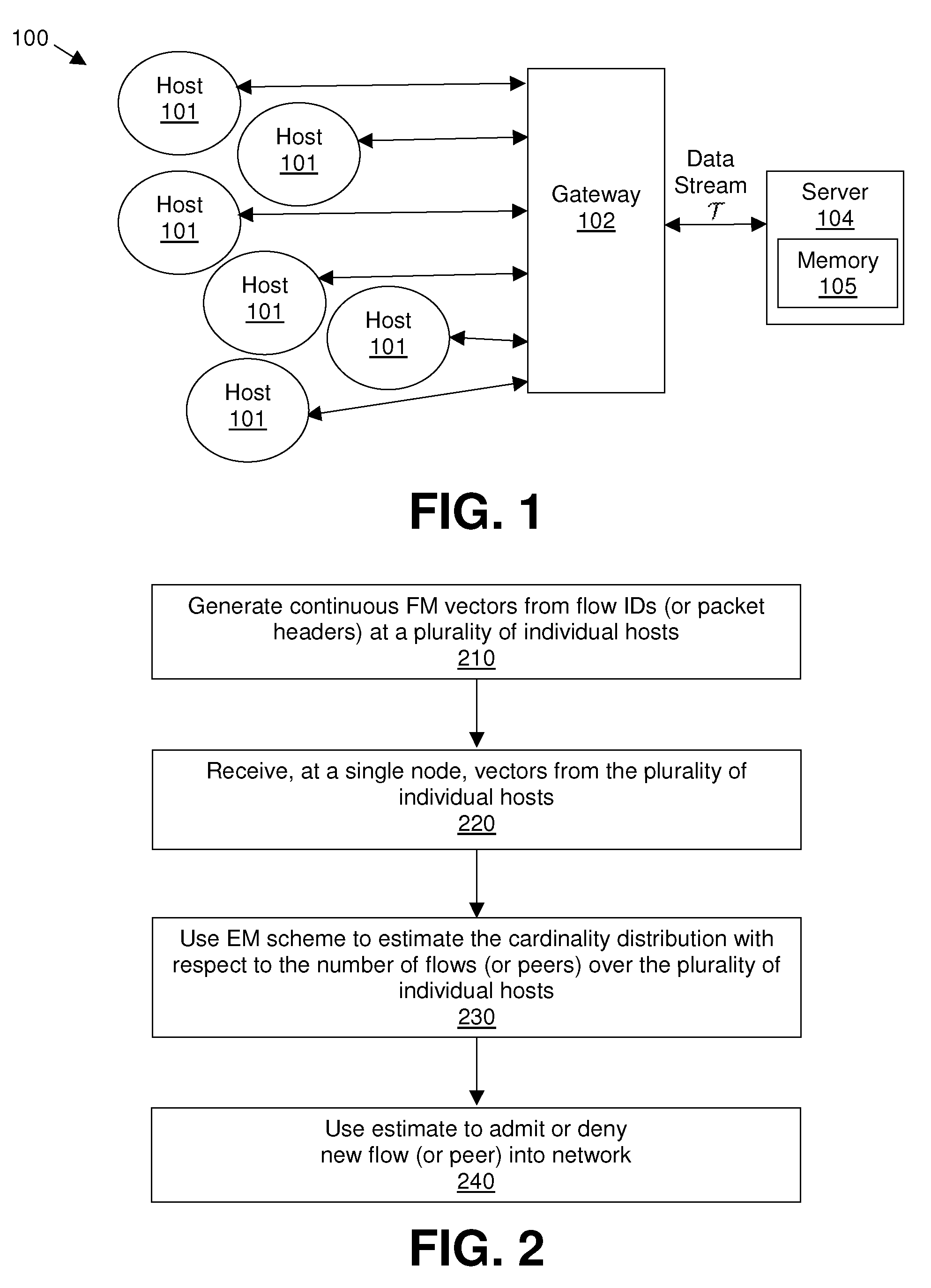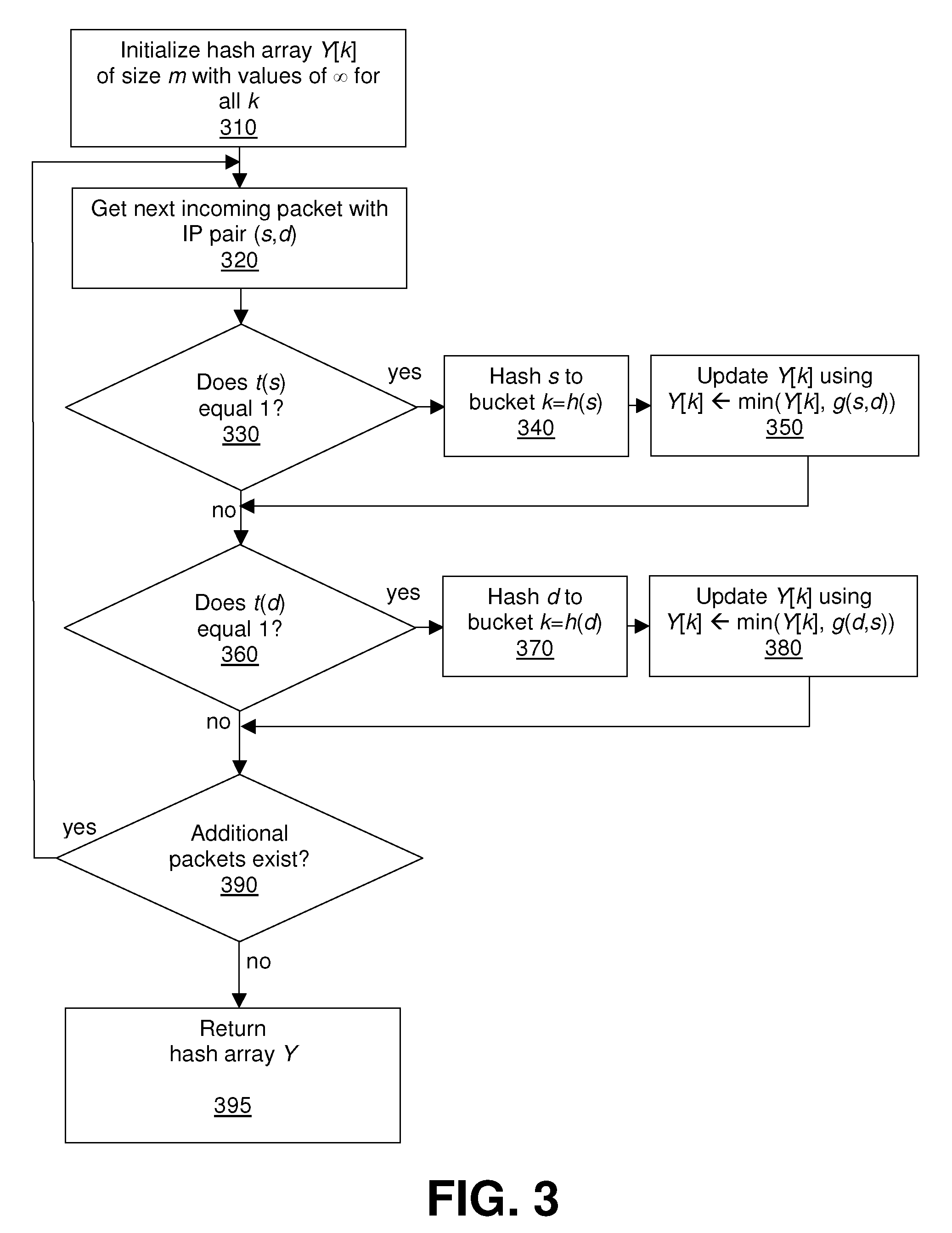Estimating cardinality distributions in network traffic
a network traffic and distribution technology, applied in the field of network traffic analysis, can solve the problems of distribution of traffic features involving distinct counts that cannot be easily detected using marginal aspects, and little attention has been paid to traffic-feature distributions involving distinct counts, so as to achieve the effect of managing their networks more efficiently
- Summary
- Abstract
- Description
- Claims
- Application Information
AI Technical Summary
Benefits of technology
Problems solved by technology
Method used
Image
Examples
Embodiment Construction
[0018]Embodiments of the present invention use estimations of cardinality distributions, which are distributions of a distinct count of a number of given elements, in network traffic. For example, given a number n, how many IP addresses communicate with n different destinations or have n flows, as observed in a network.
[0019]Conventional methods developed for estimating traffic volume distributions might not be useful in such a determination, because traffic volume and cardinality are intrinsically different quantities—traffic volume is additive, but cardinality is not. As a result, it is relatively easy to compute individual volumes, but difficult to compute individual cardinalities. For example, to obtain the flow count for a host, either a hash table, bitmap, or Bloom filter is constructed to keep track of existing flows, to avoid duplicate flow records resulting from packets from the same flow. If T is the total number of flows of all hosts under study, then such cardinality cou...
PUM
 Login to View More
Login to View More Abstract
Description
Claims
Application Information
 Login to View More
Login to View More - R&D
- Intellectual Property
- Life Sciences
- Materials
- Tech Scout
- Unparalleled Data Quality
- Higher Quality Content
- 60% Fewer Hallucinations
Browse by: Latest US Patents, China's latest patents, Technical Efficacy Thesaurus, Application Domain, Technology Topic, Popular Technical Reports.
© 2025 PatSnap. All rights reserved.Legal|Privacy policy|Modern Slavery Act Transparency Statement|Sitemap|About US| Contact US: help@patsnap.com



